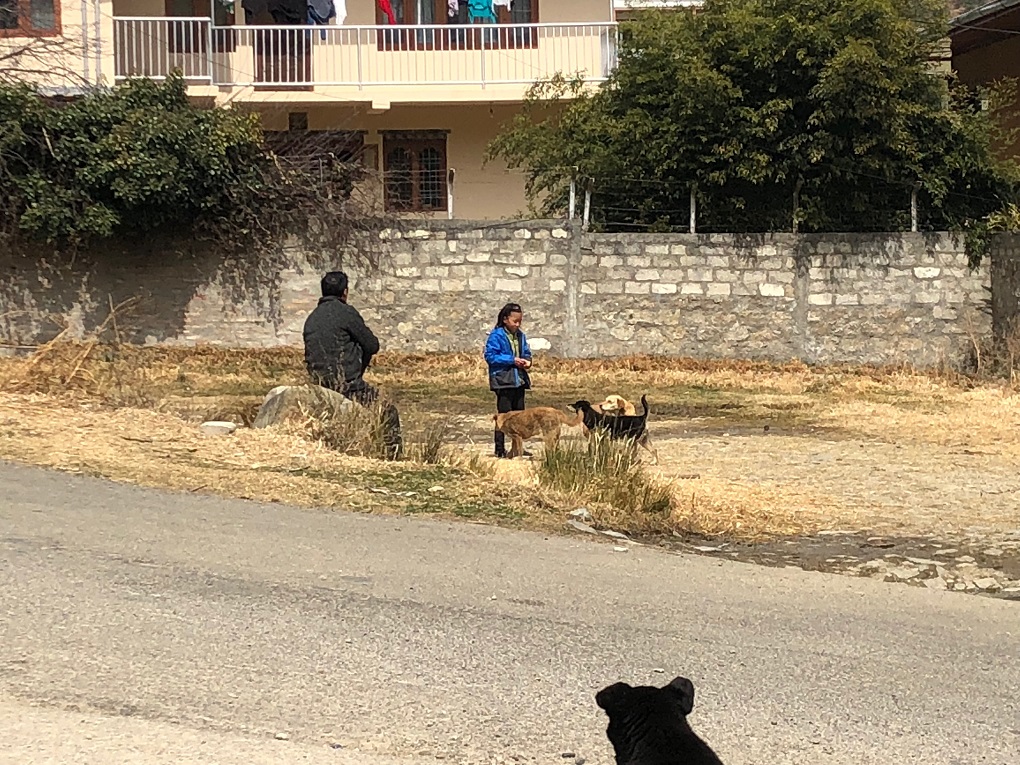On February 21 this year, Prime Minister Lotay Tshering of Bhutan urged every citizen to adopt a stray dog. This would be a “a gift to the king” on the monarch’s birthday.
This is the latest in a series of efforts that run back two decades to deal with Bhutan’s stray dogs. With a population of approximately 765,000 people, Bhutan has about 102,000 dogs, according to Karma Rinzin the chief veterinary officer with the Department of Livestock under the Ministry of Agriculture and Forests. They roam freely, protected by a national culture that frowns upon the killing of animals.

This is no longer possible. Both locals and tourists have their complaints. “Apart from dog bites, tourists mostly complain about having sleepless nights due to noise pollution caused by dogs barking outside,’’ said Wangchuk, a tour agent.
Disease and bites
The Ministry of Health’s 2019 Annual Health Bulletin recorded 6,760 dog bite cases in 2018. The year before had recorded 6,416 cases, while 2016 had recorded the most cases: 7,915. In 2015, there had been 7,099 dog bite cases.
In most cases such bites are minor irritants, with rabies almost eliminated in the country, and the last recorded case being in 2016. Nevertheless the dogs themselves are prone to disease. There was a recent outbreak of the viral canine distemper disease in Dagana division of southwest Bhutan, and in October 2019, the National Veterinary Hospital reported that it had treated 43 dogs infected by the virus.
“Our goal is not to [achieve] zero dog population in Bhutan but reduce the population to a manageable level and make dogs free of disease,’’ said Tashi Samdrup, the director general of the Livestock Department.
Sterilisation campaign
In 2009 the Department of Livestock, with support from Humane Society International (HSI), initiated measures to control the dog population through a programme called, ‘Capture, neuter, vaccinate and release’. Karma Rinzin said that they have sterilised around 105,000 dogs through this programme up till now. The number quoted by HSI by July last year was 85,000. The number of dogs vaccinated is higher than the actual current population due both to the death, and birth, of new stray dogs from the unsterilised population.
According to HSI, between 60-80% of the dogs in Bhutan have been sterilised and vaccinated. Two different surveys were conducted by HSI and the Department of Livestock to determine this.
It is, though, a never-ending struggle, as the small untreated population keeps breeding, and dogs also come in from the rural areas. As the surveys noted dog ownership in rural areas is almost twice as high as that in urban areas – 40% compared to 21%, so there is always a tendency towards rural to urban migration, mimicking human behaviour.

One of the biggest issues is the abandoning of dogs that were previously pets. This is what the prime minister’s speech tried to address. Although there are laws that state the responsibility of owners, including that of taking care of their health needs such as vaccination, these are largely only on paper. About half of the dogs owned as pets are not confined on premises.
Role of religion
A significant problem for the department has been the pushback from religious communities, said livestock advisor Min Prasad Timsina. Any time the department tries, “to pursue any livestock development activities other than dairy activities, the sector face lots of social issues and oppositions from religious bodies,” said Timsina. Even sterilisation was opposed, but the department has been able to make a convincing argument, to the extent that even monks now come with their dogs.
“We can use religious belief in positive way. For example Buddhists believe we meet people or animals because of past karmic deeds, and maybe we can convince them to adopt the dogs in their vicinity using this perception,’’ said Karma Rinzin.
Civil society organisations that have good intentions can cause bigger problems because they often run out of funds. When they do, the dogs they have been trying to rear escape or turn feral, said Tauchu Rabgay, a livestock official. Neighbouring Tibet has experienced similar challenges dealing with wild dogs, which pose a growing threat to people and the environment.
See: Tibetan Mastiffs: Abandoned and dangerous
Way forward
Karma Rinzin said they are planning to attach microchips to the dogs and encourage household and community adoption. This will also help promote responsible dog ownership.
As part of the community engagement and household adoption initiative, the local leaders in Haa district have set an ambitious target of 50% of households adopting stray dogs.
“We are hopeful that they will be able to achieve the target, as we are involving entire community,’’ said Thinley, a local leader in Haa. “Our aim is to make every household adopt one to two dogs, feed them and get them vaccinated and sterilised.”
And when that happens, maybe the dog fights, both planned and unplanned, will come to an end.
With inputs by Omair Ahmad
![<p>A normal sight for any visitor to Bhutan will be the many stray dogs that seem to own the place [image by: Dawa Gyelmo]</p>](https://dialogue.earth/content/uploads/2020/03/IMG-5743-e1593080227389.jpg)








![Locals travel home on a wooden boat in the Sundarbans National Park, West Bengal [image: Alamy]](https://dialogue.earth/content/uploads/2020/03/GJEG94-300x200.jpg)